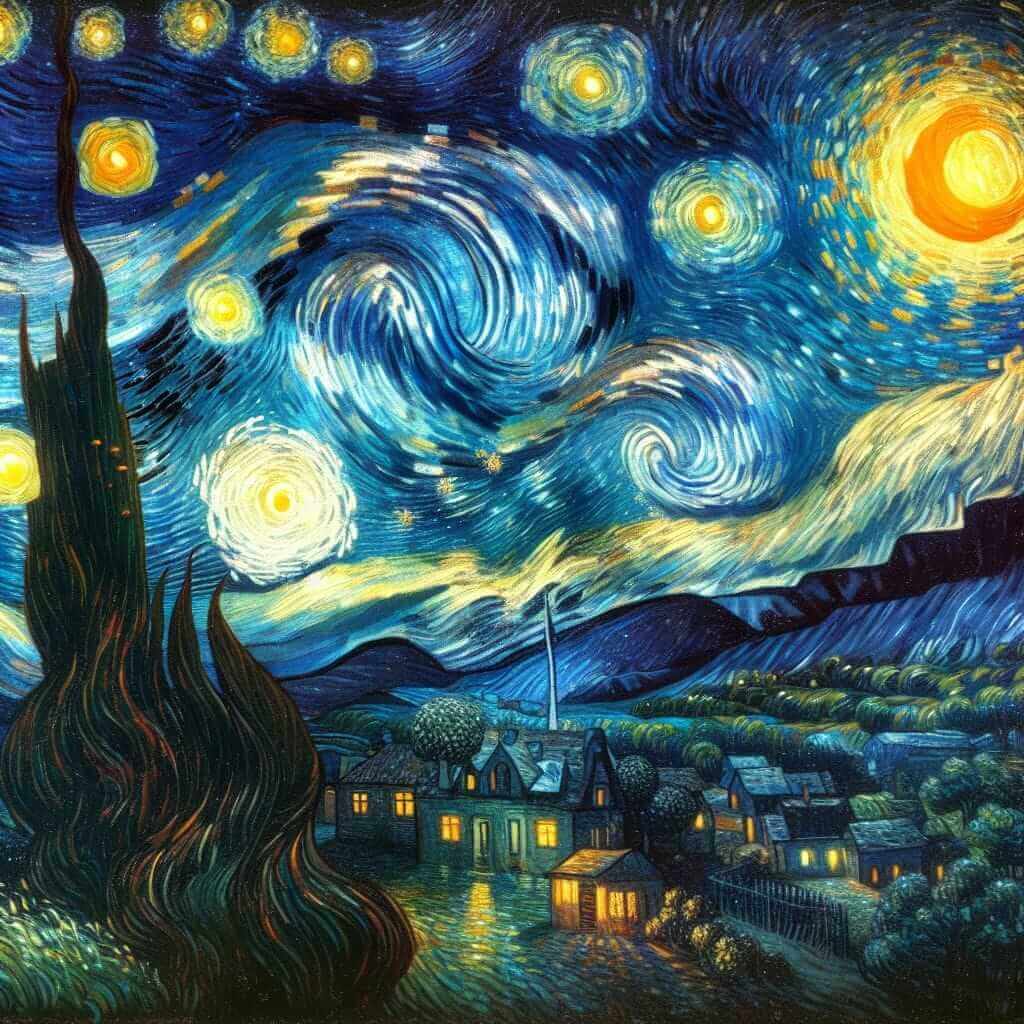The IELTS Reading test often includes a variety of topics, analyzing an artwork or discussing contributions of famous authors to literature being a couple of frequently appearing themes. These topics not only test your comprehension skills but also your ability to understand complex textual information and vocabularies related to art and literature. Historically, topics like these have been recurrent, making them essential areas to focus on during your preparation. In this article, we’ll guide you through a sample IELTS Reading test based on the themes of “Analysis of a Famous Artwork” and “Contributions of Renowned Authors to Literature.”
Sample Reading Test
Passage: Analysis of a Famous Artwork – “Starry Night” by Vincent van Gogh
Vincent van Gogh’s “Starry Night” is one of the most renowned paintings in the history of Western art. Painted in 1889, during van Gogh’s stay at the Saint-Paul-de-Mausole asylum in Saint-Rémy-de-Provence, France, this artwork is celebrated for its vibrant swirling sky, luminescent stars, and poignant depiction of the night over a tranquil village. Van Gogh’s use of color and technique in this painting has been subject to extensive analysis and interpretation.
Van Gogh employed vigorous brushstrokes, creating dynamic energy within the painting. The swirling clouds, the bright crescent moon, and the radiating stars seem almost alive, contributing to the sense of movement. The cypress tree in the foreground reaches up to the sky, which some scholars interpret as a connection between the earth and the heavens.
The painting depicts the view from the east-facing window of his asylum room, although the artist added an idealized village beneath the expansive sky. This introduces elements of both reality and imagination in the composition. Art historians have debated the extent to which “Starry Night” was influenced by Van Gogh’s mental state; the painting conveys an emotional intensity that resonates with his turbulent life. Therefore, “Starry Night” is not just a representation of the night but an embodiment of Van Gogh’s innermost feelings and psyche.

Questions
Question 1-4: Multiple Choice
-
Which of the following best describes van Gogh’s technique in “Starry Night”?
- A. Precise and detailed
- B. Smooth and continuous
- C. Vigorous and dynamic
- D. Subtle and minimalist
-
What is suggested by the cypress tree in the foreground?
- A. Van Gogh’s longing for peace
- B. A connection between earth and the heavens
- C. The isolation of the village
- D. The immensity of the night sky
-
What artistic elements convey movement in “Starry Night”?
- A. The clear depiction of the stars
- B. The brushstrokes in the sky and clouds
- C. The detail of the village houses
- D. The stillness of the cypress tree
-
Which aspect of “Starry Night” reflects an idealized element according to the passage?
- A. The swirling stars
- B. The crescent moon
- C. The peaceful village
- D. The vibrant colors
Question 5-8: True/False/Not Given
- Van Gogh painted “Starry Night” during his stay at the Saint-Paul-de-Mausole asylum. (True/False/Not Given)
- The painting “Starry Night” depicts Van Gogh’s exact view from his asylum window without any alterations. (True/False/Not Given)
- Art historians unanimously agree on the mental state of Van Gogh influencing “Starry Night”. (True/False/Not Given)
- “Starry Night” includes a realistic depiction of a village as seen by Van Gogh. (True/False/Not Given)
Answer Key
Multiple Choice Answers
-
C. Vigorous and dynamic
- Van Gogh’s brushstrokes create a sense of movement and energy.
-
B. A connection between earth and the heavens
- The cypress tree is interpreted as a link between the two realms.
-
B. The brushstrokes in the sky and clouds
- The swirling forms in the sky depict a sense of movement.
-
C. The peaceful village
- Van Gogh added an idealized village beneath the sky.
True/False/Not Given Answers
-
True
- “Painted in 1889, during Van Gogh’s stay at the Saint-Paul-de-Mausole asylum…”
-
False
- He added an idealized village to the scene.
-
Not Given
- The passage mentions debate among historians, implying lack of unanimity.
-
False
- The village is an idealized element, not a realistic depiction.
Common Mistakes
- Misinterpreting the questions due to not fully understanding the passage context.
- Overlooking keywords that provide hints to the correct answer.
- Failing to distinguish between “True/False/Not Given” when the information is implied but not explicitly stated.
Vocabulary
- Vigorous (adj): energetic and forceful. /ˈvɪɡərəs/
- Crescent (adj): shaped like a new moon. /ˈkrɛsnt/
- Idealized (adj): regarded or represented as perfect or better than in reality. /aɪˈdiəlaɪzd/
- Turbulent (adj): characterized by disorder or confusion. /ˈtɜːrbjələnt/
- Luminescent (adj): glowing or emitting light. /ˌluməˈnɛsənt/
Grammar
Relative Clauses
- Which/That introduce additional information about a noun.
- Example: The swirling clouds, which seem almost alive, contribute to the sense of movement.
Present Perfect Continuous
- Used for actions that started in the past and are still continuing.
- Example: Van Gogh’s use of color has been subject to extensive analysis and interpretation.
Advice for High Reading Scores
- Practice Regularly: Engage with various reading passages to build familiarity with different topics.
- Expand Vocabulary: Make use of flashcards and vocabulary lists to enhance your lexical resource.
- Analyze Mistakes: Review incorrect answers to understand mistakes and avoid repetition.
- Time Management: Practice under timed conditions to improve speed and efficiency.
By thoroughly understanding topics such as the analysis of famous artworks and contributions of renowned authors, and practicing regularly with sample questions, you can enhance your IELTS Reading skills and improve your score significantly.